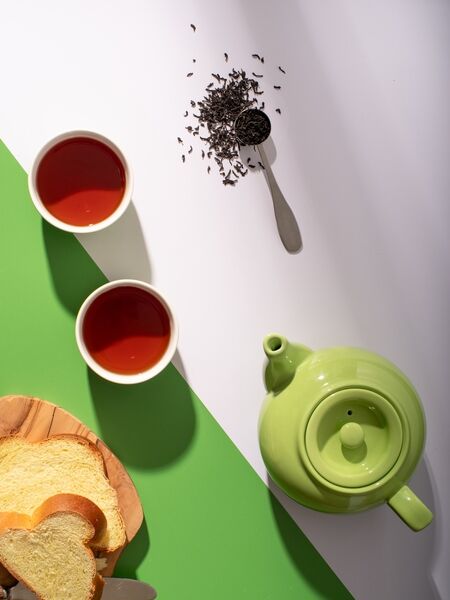Afternoon Tea vs High Tea: Etiquette and History


For more than a century, Americans have mixed up the experiences of High Tea and Afternoon Tea and we believe it’s high time to end the confusion.
We suspect the main reason is that in “American English,” the word high is often associated with something upper class or elegant so we attach the word high to such phrases as high society, high-and-mighty, high-falutin’ or high-handed.
High Tea
Although the intention of these words, by Americans, is to imply something snooty or, more graciously, elegant, the British meal known as High Tea is anything but. It’s a casual early dinner served between 5 and 6 p.m., most commonly observed in Scotland and northern England by the working class.
These meals are served at home, at a traditional dining table with equally traditional high-backed wood chairs. Both table and chairs were “high” as opposed to the low sofas and chairs and low tables of afternoon tea service. (A British low table is what Americans often call a coffee table, but let’s not go there …)
British High Teas can include cold meats, most often beef; pickled fish, baked beans, roasted or boiled potatoes, hearty salads, substantial pies, tarts or tea cakes, and a good slab of cheese with crackers or homemade bread.
High Tea was, and is, a substantial albeit inexpensive meal served with tea, usually just as hearty and just as affordable as the food, probably a blend of Indian and Chinese black teas or a lighter black from Ceylon (Sri Lanka) poured from an ordinary Brown Betty teapot into sturdy crockery cups.
High Tea began as nourishment after a long day of manual labor by the working class. It first gained popularity during and after the two World Wars from approximately 1914 through 1945 and was an opportunity for workers, both men and women, to truly rest, eat more than a quick sandwich, and to finish off the meal with a leisurely cup, or two, of hot tea.
For most of these workers, jobs meant no time to relax as there were few or more often, no breaks, and time to eat the brown-bagged lunch was brief. Current employment rules have improved but meal and break times are still regulated for the working class making High Tea an at-home pleasure and, in its way, an end-of-the-day reward. Many Brits now refer to this meal as supper, dinner or tea (no high added.)
AFTERNOON TEA
An American, who embraced British citizenship in 1915, Henry James may have been the first to introduce his native country to 4 p.m. tea service when he wrote in his novel, “Portrait of a Lady,” There are few hours in life more agreeable than the hour dedicated to the ceremony known as Afternoon Tea.
Afternoon Tea, both here and in England, reflects the flair, the elegance, and often, the preciousness that only a person of means can provide on a regular basis. It’s also the reason for a delicious and charming splurge to enjoy at fine hotels or upscale restaurants to observe birthdays or other special occasions.
Tea arrived in the U.K. in the mid 17th century, and the country quenched its thirst and piled its coffers with coins made with extensive tea trade for more than two centuries. During all that time, tea remained terribly expensive (and taxed heavily for its colonies, but we digress …) Because of its expense, tea was consumed by only the wealthiest of the wealthy and solely as an alternative beverage in a culture that drank ale for breakfast.
During the mid 19th century, royal men and women spent hours dressing and undressing during the day for all the many slots on their social schedule: fox huts or polo, picnics or rendezvous and parties, balls, concerts, and royal self-celebrations that lasted late into the night. Allegedly, Anna Russell, the 7th Duchess of Bedford, in a pique of hunger between substantial luncheons and 8pm dinners, begged her lady-in-waiting for a spot of tea and toast whilst being fitted for still another evening gown to wear for still another court event.
THE DEDICATED HOUR BEGINS
The royal class quickly embraced the Duchess’s idea and like all things royal, that humble snack evolved into a social event complete with rules for dress, social interaction, and menus which became an elaborate selection of finger sandwiches (smoked salmon, expensive cucumbers or ruby sweet tomatoes and butter) accompanied by Scottish scones with ultra-expensive clotted cream or seasonal jams or, on more casual days, a crumpet or two. To add to the menu, and calorie count, were petit fours (tiny frosted cakes), tartlets, and other treats, from plump juicy strawberries in summer and or whatever confection the chef could create in winter to amuse his royal employers and their guests.
The teas would be the finest Darjeeling from the British colony of India or supreme oolongs from Formosa or a hearty Keemun from the mainland of China. On rare occasions, perhaps the tea would be a tea perfumed with Jasmine to add an even greater touch of luxury to the tea table.
The finest of accoutrements were de rigeur of the royal tea table: sterling teapots, sugar and cream holders with equally fine sterling sugar cube tongs; the finest hand-painted porcelain cups and saucers, and smaller, specially-designed silver tea service cutlery, the better to gracefully spread jam on scone or, because of their smaller size, silver forks would be used to place lemon in the cup. Tea time was set at 4 p.m. midway between lunch and late dinner time.
The tradition continues in the U.K. and has greatly evolved here in the U.S. where it is hosted with flexibility in time and the menu and the location. The objective, however, remains relaxation, accompanied by charming conversation amidst treasured friends enjoying scrumptious nibbles and an intoxicating pot of tea. Long live this most agreeable hour of pleasure!
